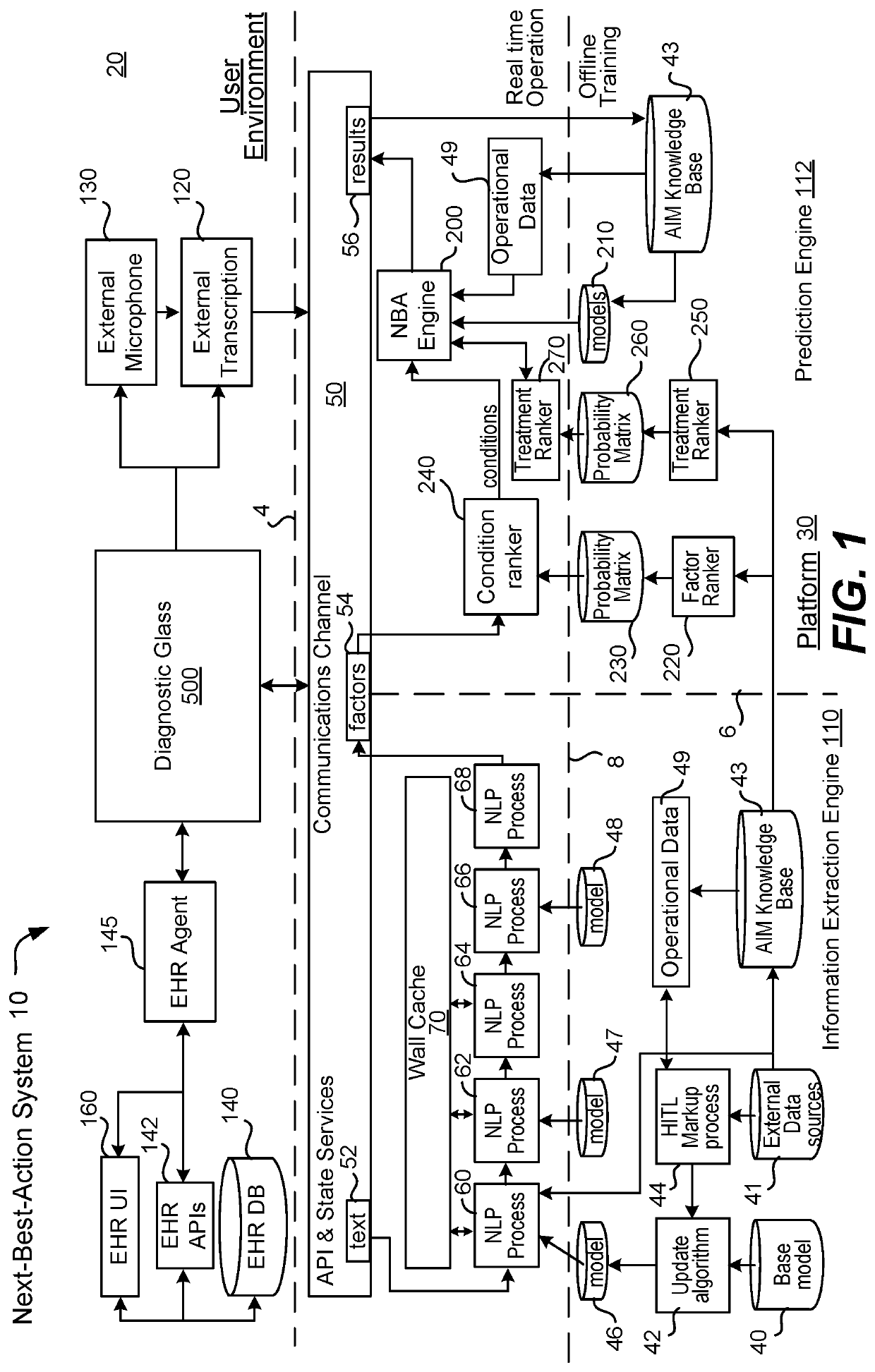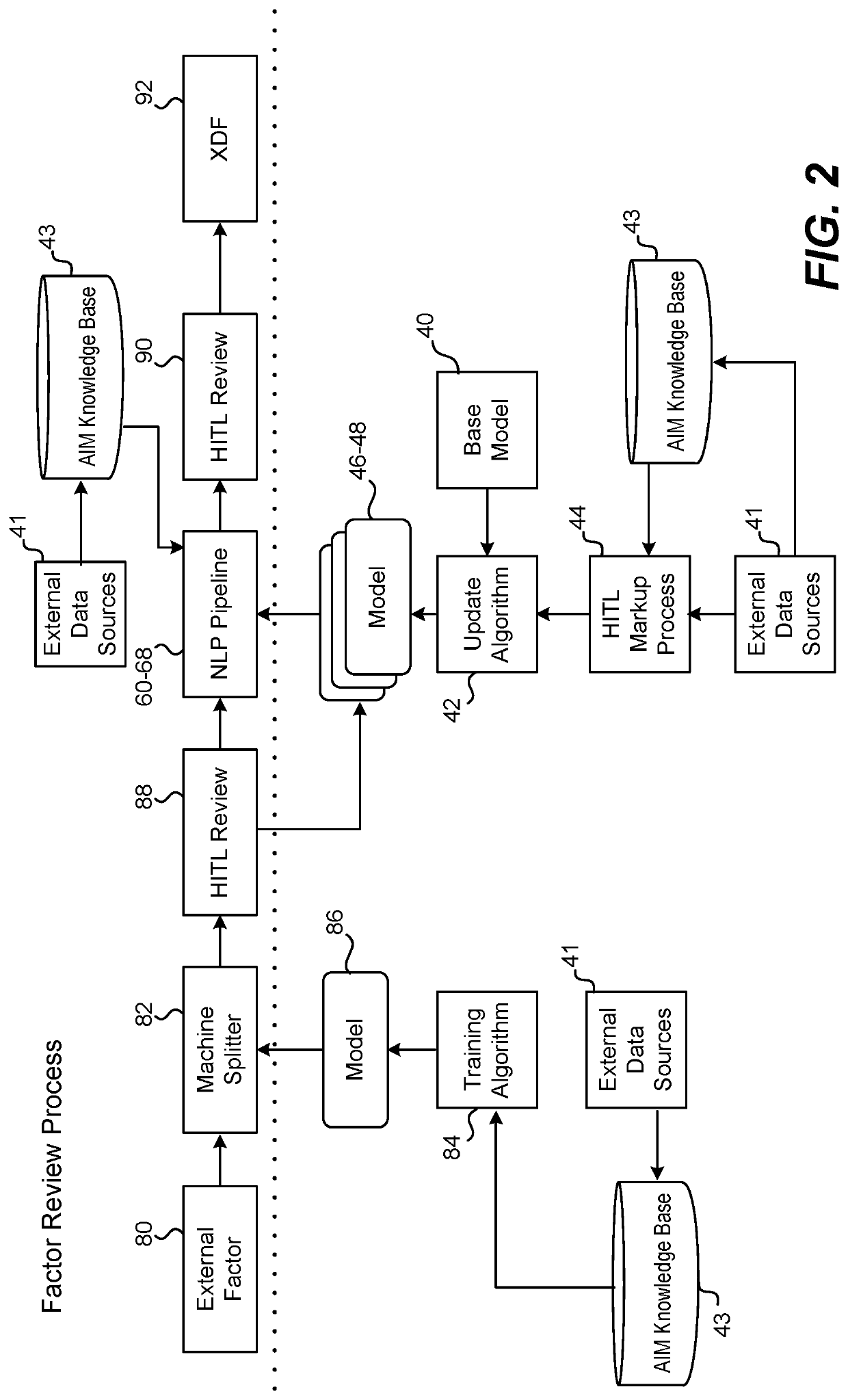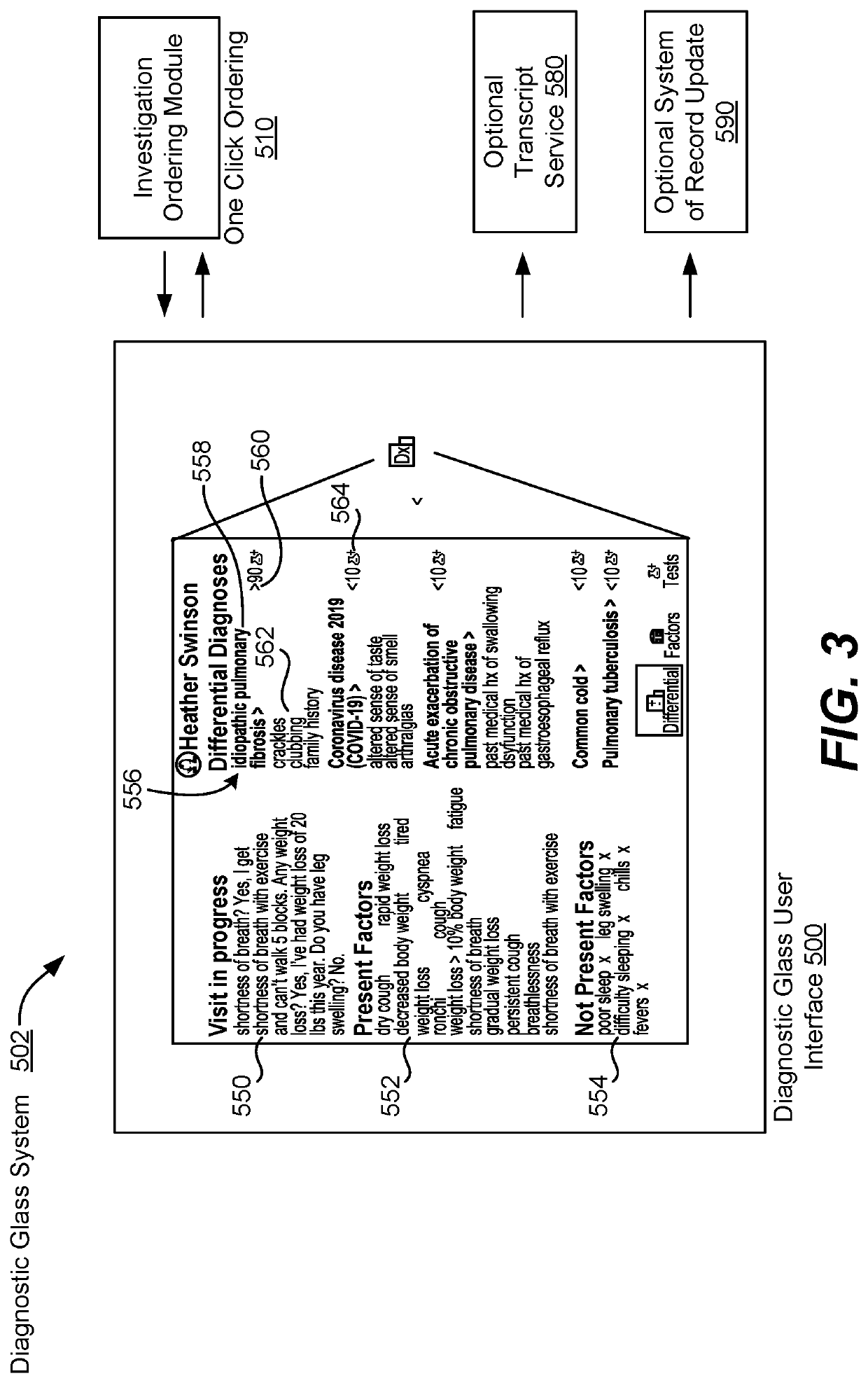Augmented intelligence for next-best-action in patient care
a technology of augmented intelligence and patient care, applied in the field of augmented healthcare decision making, can solve the problems of heavy cognitive load, limited time available per patient, and medical knowledge which is now humanly impossible to keep current and apply, and achieve the effect of accelerating the world's shift to augmented healthcare and efficient diagnosis
- Summary
- Abstract
- Description
- Claims
- Application Information
AI Technical Summary
Benefits of technology
Problems solved by technology
Method used
Image
Examples
example knowledge
Base Record
[0141]As mentioned earlier, external data sources 41 may be comprised of numerous different databases and data sources that all associate certain clinical factors, laboratory tests and investigation results with a particular condition that is indicated by these factors, tests and results. These data sources may also include drug interactions, care pathways and treatment data, for example, which treatments to consider in which order for single conditions and multiple conditions (comorbidities).
[0142]FIGS. 9A and 9B illustrate a simple example of a single record in a database of external data 41. The data in this example is from BMJ Best Practice US, and from the BMJ Best Practice Evidence-Based Medicine knowledge base. This is one external data source that the invention uses. This example describes a particular condition and its associated clinical factors, laboratory tests and investigations. Of course, there will be many thousands of conditions in a particular database a...
PUM
 Login to View More
Login to View More Abstract
Description
Claims
Application Information
 Login to View More
Login to View More - R&D
- Intellectual Property
- Life Sciences
- Materials
- Tech Scout
- Unparalleled Data Quality
- Higher Quality Content
- 60% Fewer Hallucinations
Browse by: Latest US Patents, China's latest patents, Technical Efficacy Thesaurus, Application Domain, Technology Topic, Popular Technical Reports.
© 2025 PatSnap. All rights reserved.Legal|Privacy policy|Modern Slavery Act Transparency Statement|Sitemap|About US| Contact US: help@patsnap.com



